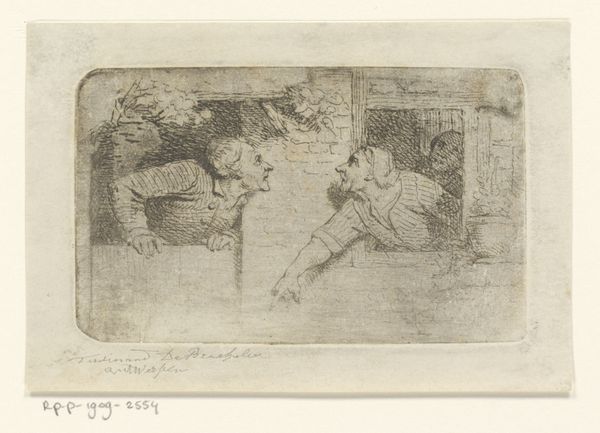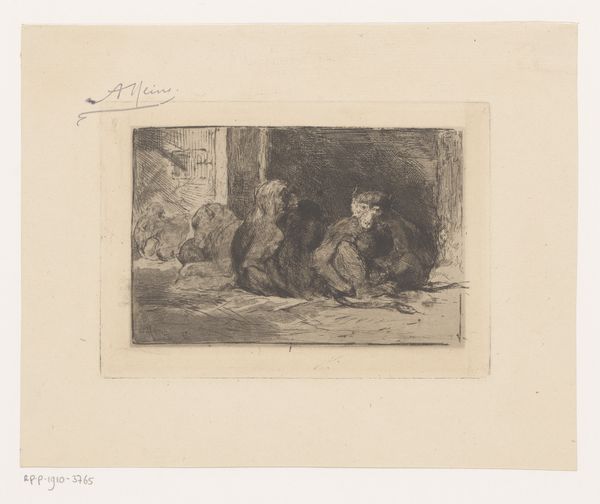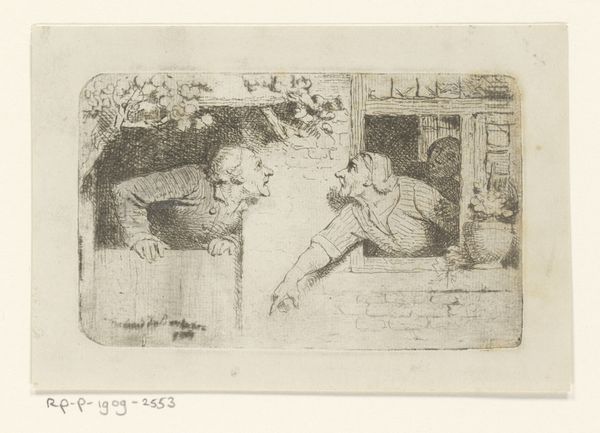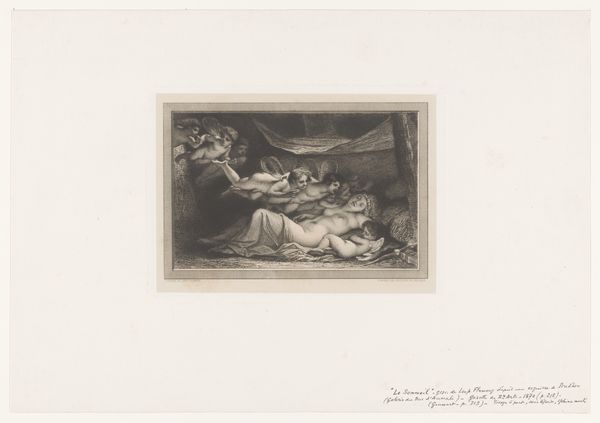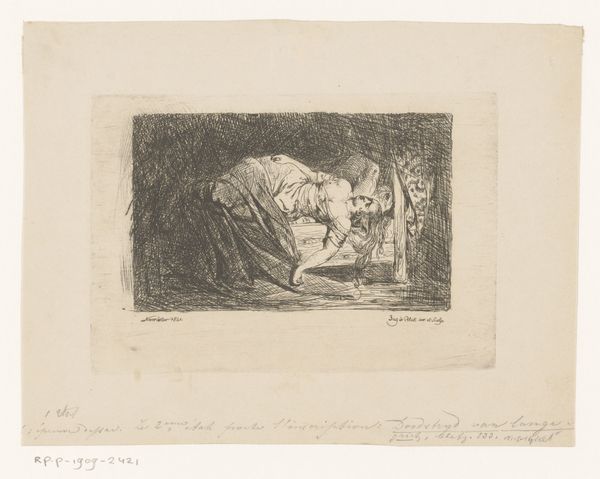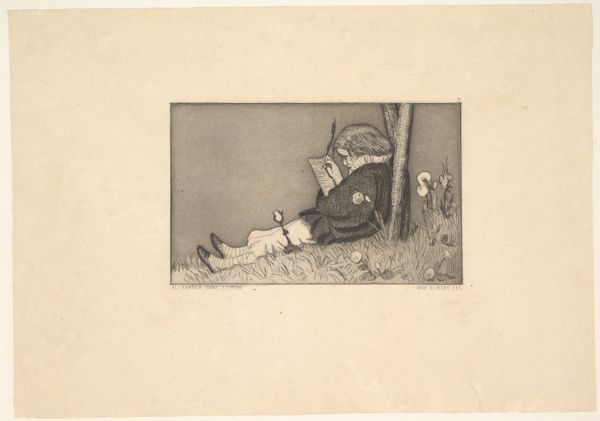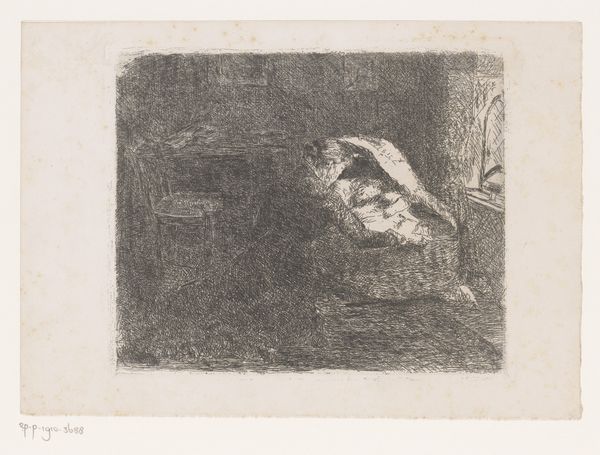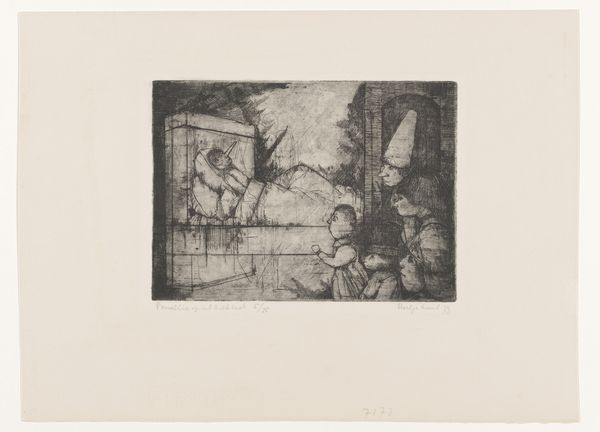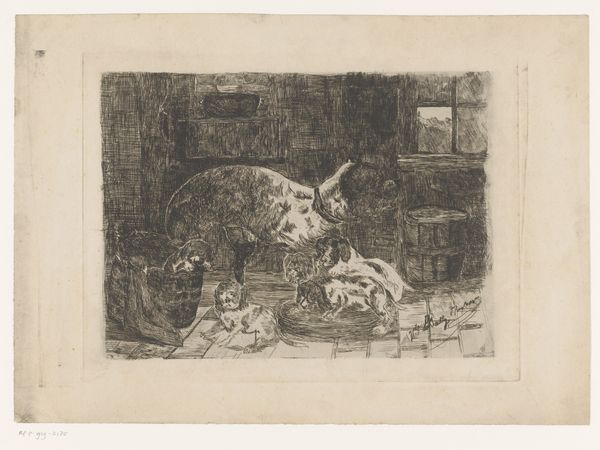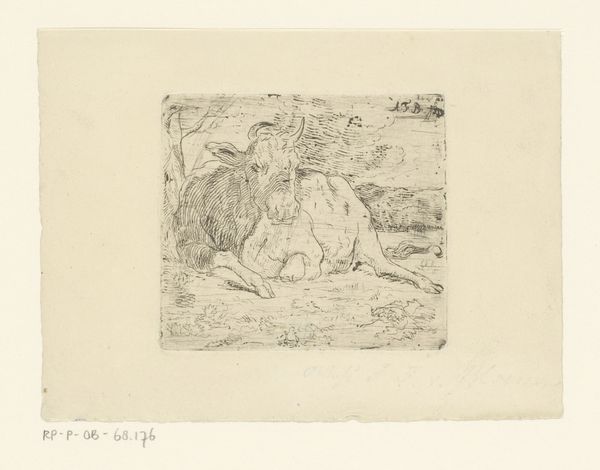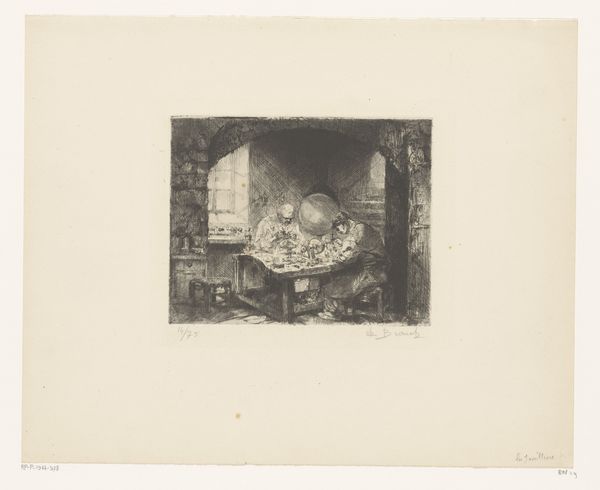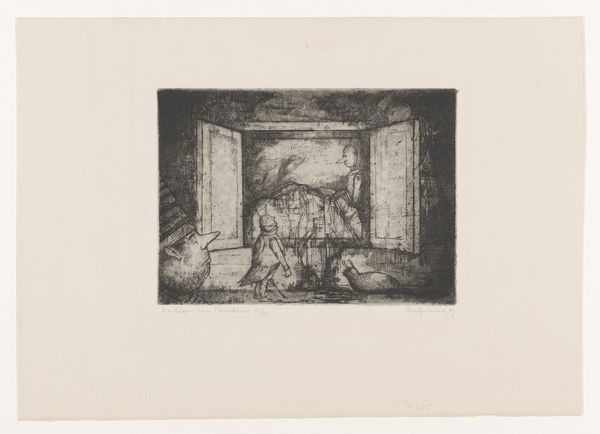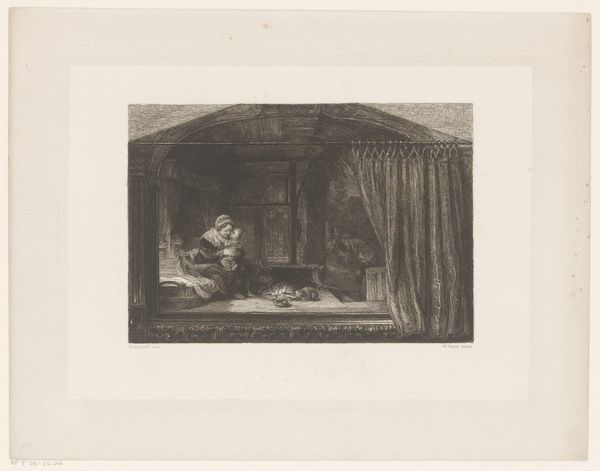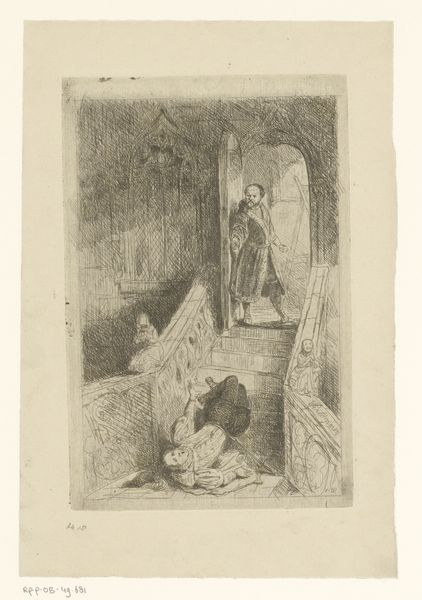
print, etching
#
narrative-art
# print
#
etching
#
genre-painting
#
realism
Dimensions: height 74 mm, width 121 mm
Copyright: Rijks Museum: Open Domain
Curator: Let's turn our attention to "Twisting Figures Hanging Out of Door and Window Openings," an etching created by Ferdinand de Braekeleer (I), who was active between 1802 and 1883. It depicts two figures leaning out of what seems to be adjacent structures. What strikes you upon first glance? Editor: It’s got this really theatrical, almost caricatured quality. Look at the rawness of the lines! You can practically feel the physical act of etching, the labor involved in producing these textures. It reminds me of some kinds of satirical street prints. Curator: Precisely! The print’s composition hints at societal interactions—specifically, class dynamics and communication networks prevalent at the time. The exaggerated expressions could highlight social inequalities or satirize certain behavioral norms. It appears this form of engagement and commentary was part of daily life, suggesting the era’s cultural narrative. Editor: Yes, and consider the materials. Etching is, by its nature, a reproducible medium. This raises questions about distribution and viewership. Who would have seen this image, and in what context? Were these readily available, inexpensive images or part of a more formal portfolio intended for a wealthier audience? The work itself makes me wonder about how popular culture was shaped and disseminated. Curator: Indeed, these points align with theories regarding realism in art. Braekeleer used etching not merely as a reproductive method but also as a mode to address social strata and identity, gender dynamics, and maybe local political stances, embedding messages in such unassuming moments of what is apparently day to day exchange between neighbours. Editor: Right, so the labor is also cultural. Think of what he’s saying about the construction and accessibility of imagery within society! That print media offered new venues for artistic interpretation and audience interaction at various class levels and economic realities of 19th century Dutch culture. Curator: The dialogue around such work invites explorations of how identity and class interplay in creating the social fabric and offers insight on 19th century societal issues. Editor: Well said. The physical artwork’s production echoes those ideas. Material meets message here, making us consider that history never occurs separately from tangible circumstances and accessible avenues of circulation. Curator: Very compelling thought! It’s works like these which inspire deeper dives into societal themes portrayed across art history—revealing complex intersectional perspectives regarding personhood back then. Editor: It really makes you appreciate the subtle nuances through materials employed to expose layers that reflect labor division and everyday existences captured during an ever changing century.
Comments
No comments
Be the first to comment and join the conversation on the ultimate creative platform.
